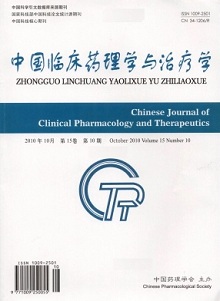Effects of soybean isoflavones on ethology and antioxidative potential of AD model rats
SUN Jing, WEI Rui-li, ZOU Ming, WANG Xiao-tong
2010, 15(10):
1122-1127.
 Asbtract
(
185 )
Asbtract
(
185 )
 PDF (366KB)
(
220
)
References |
Related Articles |
Metrics
PDF (366KB)
(
220
)
References |
Related Articles |
Metrics
AIM: To study the effects of different doses of soybean isoflavone (SIF) on ethology and antioxidative potential of AD model rats. METHODS: Sixty healthy male SD rats were randomly divided into sham operation group; model group; low, medium, high dose SIF groups and positive control group, respectively, with each group including 10 rats. The regulated dose medicine was given to the SIF groups and positive control group by intragastric administration daily for 14 days before Aβ injection, sham operation group and model group were given equivalent of 0.5% CMC-Na. Morris water maze experiment was adopted to evaluate the learning and memory ability of rats in each group on the 7th day after Aβ injection, then the pathological change in rats' hippocampus was measured by immunohistochemical method, and the activities or levels of SOD, GSH-Px, MDA in serum and brain tissue were determined. RESULTS: Comparing with model group, the mean escape latencies of rats were shortened and number of times that passed through original platform location increased in every dose SIF groups and positive control group (P<0.05), the mean escape latencies of rats in medium and high dose SIF groups were significantly shortened than that of positive control group (P<0.05). Result of immunohistochemistry revealed: comparing with model group, the integrated optical density of Aβ positive reaction product in every dose SIF groups and positive control group was decreased, and the Aβ-positive expression in high dose SIF group was significantly decreased than that of positive control group(P<0.05). Comparing with model group, the activities of SOD and GSH-Px in serum and brain tissue in medium and high dose SIF groups and positive control group were increased differently, and the content of MDA was decreased differently (P<0.05); The activity of SOD in serum and brain tissue in high dose SIF group was much higher than that of positive control group,and the content of MDA in high dose SIF group was much lower than that of positive control group (P<0.05); The activity of GSH-Px in serum in high dose SIF group was much higher than that of positive control group, but the activity of GSH-Px in brain tissue in high dose SIF group was no significant difference compared with positive control group (P>0.05). CONCLUSION: SIF could improve the behavioral capacity of AD model rats induced by Aβ25-35, and the probable mechanism is that SIF changed the redox state, then increased the antioxidative level, thereby exhibited its neuro-protective effects.


